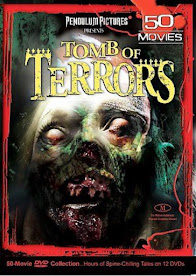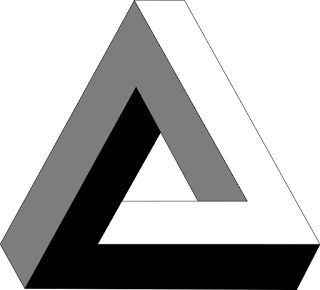It was during the early years as an animation student that I learned the significant value of a frame of animation or film. Each and every frame matters and the contents of those frames are what determine your budget and timeframe for completing a film. Finding shortcuts becomes a savings to the production budget.
As of this writing, it is now 20 years ago that the cult classic puppet musical, Flesh Eating Ghouls From Outer Space was originally performed live. This musical puppet show was being toured around Phoenix, Tempe and Mesa to audiences delight and rave reviews. Originally created and performed by Skeleton Puppet Theater for an annual Halloween party, hosted in Sunnyslope, Phoenix Arizona.
 |
| Flesh Eating Ghouls From Outer Space - 20 Year Anniversary |
The annual Sunnyslope halloween party always included a high level of creative application. Blacklights, illusions and original paintings and sculptures were all included each year. Not to mention, a fun themed dance floor and excellent food, often catered by the Greer's et al. Zelda would reign as the queen of Halloween as a zombified corpse, propped up in her rocking chair in the graveyard. Headstones and cemetery scenes created a deeper sense of connection to the celebration of life that those parties were.
Each year demanded an element of entertainment as musicians, poets and radio DJ's were a small sampling of the talented collective that later became Skeleton Puppet Theater. An annual puppet show was born. With performances of Night of the Living Dead - The Musical, Circus of Death and Louie's Love Zone to name a few.
There was an immediate connection to puppetry for me. As an animation student, I was attempting to pull off stop motion, puppet animation during a time in which animation was taking a more computerized approach. Sitting at a desktop while developing carpal tunnel in order to achieve animation seemed more laborious than posing stop motion puppet armatures frame by frame. When I saw how effective a simple hand puppet could be at telling a story, I was hooked. Especially since it seemed less time was required to get frames to completion. This of course requires advance design and production work regardless. Puppetry presented an opportunity for me to advance my interest in puppet animated forms, by using a real-time animation, now known to me as puppetry.
Originally, I offered to join Skeleton Puppet Theater as a Technical Director to ensure music and technical cues would be prepared and ready for each show. We would practice over each summer to prepare for Halloween. During Circus of Death, there was a disagreement between puppeteers and a fight broke out. Dave Knight was no longer to perform as the beligerent but jovial skeleton with a top hat, Bony Tony. Bony Tony was then offered to me. I recall performing Bony while Dave listened and bantered from the audience. My hopes to do the character justice were confirmed when Dave gave me the "good job". He did say that he thought his was better and I do not disagree. Dave Knight performed Bony Tony like a savage beast with zero shits to give and he was still very funny and relatable!
The stage was enormous. We required several vehicles to transport the stage Pete built. It was unsustainable but we didn't care at the time, we were just excited to be asked to perform at various odd venues in and around the valley. The stage had a lighting console built in and had many components including "wings" to help mask any behind the scenes action.
Skeleton Puppet Theater was a fully functioning, live theater troupe. Imaginology was a full fledged multimedia production company and the timing was perfect for the two to work together to then produce the short film, Flesh Eating Ghouls From Outer Space.
Collaborating with Pete, I designed and fabricated the foam latex and paper mache composite puppets. Although I had the head and the bodies, it wasn't until Pete added glove fingers for dreadlocks and socks for the neck and mouth, that the characters came to life. It should be noted that my aunt Deborah created the capes for the ghouls. Pete later painted some glitter bikini bottoms to finish off the details of the aesthetic.
I was working in the Arizona Heart Institute media production facility VAS at the time. I had made some connections in the industry and befriended Steve Wargo who had a studio in his oversized garage space of his home. We filmed and photographed Flesh Eating Ghouls in his studio over the course of a long weekend.
 |
| Filming Flesh Eating Ghouls From Outer Space in Steve Wargo's Studio |
While at VAS, I had become the in house author of DVD video titles on the Scanarist DVD authoring system. This is how I was able to create a DVD that would play worldwide on almost any DVD player (a big deal at that time). I authored and funded the 1,000 copies of the Flesh Eating Ghouls From Outer Space DVD's that are now in circulation worldwide.
The team was often testy. Creative differences would present themselves. Opinions about what was good vs. KRAP were often times debated. We were a team of laughing, drunk and stoned idiots who had an idea and some songs to record to make the original concept work. We religiously met on Sunday's. The closer to Halloween it was, the more frequent the Sunday visits. Almost always in Georganne's back yard, although we moved around and often hosted at Captain Mike's.
Our audio visual team was me. Randy would help with sound if he could and Scott Pfister would pitch in for the big shows. I rarely had the equipment needed to properly facilitate a 5 person creative puppetry team. We needed wireless lavalier microphones for each of us, but often shared one or simply used an open mic behind the stage. The stage itself was wooden and did not allow any sound through. We learned this requirement after some early rehearsals. I would beg and borrow from anyone willing to allow us to use their gear. We are appreciative of all our supporters, fans and family over the years...thank you!
At a certain stage however, you must pay people to show up and work for you. Skeleton Puppet Theater rarely ever got paid. Imaginology was spending money on studio time and phtotographers/videographers to bring their eye and equipment to the studio. When you incur financial commitment to a film or media project, you are usually deemed Executive Producer credit. Renting studio space and paying the crew became an Imaginology job and we are proud to do so.
Live recordings of our early shows exist and are included on the Flesh Eating Ghouls From Outer Space DVD. There are hidden easter eggs on the DVD menu. If you point the cursor at the sun, you will be taken to a submenu of Circus of Death and Louie's Love Zone episodes. These are early efforts we made at capturing the brilliant comedy we had been performing for years on film.
All Skeleton Puppet Theater artists are performers, puppeteers, voice over actors and more. An extremely talented crew, which includes:
Pete DesRosiers - creator, writer, puppeteer, designer and musician. Pete is arguably the most credited for creating and inspiring the puppet shows that became synonymous with Skeleton Puppet Theater. His creative vision and boundless imagination has inspired me for decades and I am a fan and proud friend.
Georgann Prince - Sculpture artist with an eye for fine detail. Georganne creates and paints the many faces, hands and details that are such an enormous appeal and an original vision for puppet design and fabrication. Georganne also paints backdrops creates props and other additional items and details.
Ruth Anne Greer - Costume designer of Skeleton Puppet Theater. Ruth Anne knows her materials and designs her own costumes accordingly. Creating cute designs or solving technical challenges, Ruthy has designed, sewn and fitted all the costumes for Skeleton Puppet Theater and Imaginology productions, including oversized dragon puppets.
Randy Greer - Musician, voice over actor and master puppeteer of all Brock Buttman performances. Randy was also instrumental(pun intended) in composing, recording and producing the musical segments for Flesh Eating Ghouls From Outer Space.
Nathaniel Jack Greene - Animator, Puppeteer, Film Maker, Producer of the short film, Flesh Eating Ghouls From Outer Space and author of this article.
Our production crew was small. Erik Weiland was Director and his brother Max was assistant. Brian Thorsen and I were working together at VAS and Brian had his own Canon camera at the time. I had found Noiko Arai online as a recently experienced Production Assistant. She and Max worked closely to identify production needs as we all stood in to assist wherever needed.
 |
| Directing Flesh Eating Ghouls From Outer Space |
Not long after the filming, I had injured my back severely and was ordered by the doctor to stay in bed. I had a Dell XPS laptop that I used to maintain websites over the summer. I edited FEGFOS on this laptop all summer long. I created graphics, lower thirds, tickers and other animated segments included in the story.
Upon completion of the film, I submitted it to numerous film festivals around the United States. The film won several awards, including Audience Favorite at the Cincinnatti International Film Festival and Best Short Film at the First Annual Phoenix Fear Film Festival. This award also generated an agreement with Brain Damage Films for Flesh Eating Ghouls From Outer Space to be included on a Best Buy distribution of "Tomb of Terrors" a horror compilation DVD set.
 |
Tomb of Terrors DVD Horror Film Compilation |
A new fanbase has been recently developing. YouTube comments are plentiful and review of the film are on-line as a result of FEGFOS being on a DVD compilation. An original production has been developed by Vomit Inducing Media, titled "TOMB OF TERRORS PAID OFF!!! | FLESH EATING GHOULS FROM OUTER SPACE REACTION!!!". An independent production of creative application with unique and disturbing looking characters of their own, this review is put together as a collaborative and fun perspective shift on how to watch a cult classic with friends on-line. We appreciate the effort put into producing this video, Vomit Inducing Media.
 |
| Vomit Inducing Media |
We have recently created a short concept teaser of what a Return of Flesh Eating Ghouls From Outer Space sequel might look like. We welcome your comments and appreciate your support and involvement. Please reach out to us on social media @imaginology and @ogbonytony.
 |
| Return of Flesh Eating Ghouls From Outer Space |
The original, live recording of Flesh Eating Ghouls From Outer Space is now available on YouTube and was filmed at Captain Mike's backyard halloween party in 2003.
Please support independent cinema. Thank you for your support!
More info at https://imaginology.com
Facebook https://facebook.com/ogimaginology
Instagram https://instagram.com/imaginology














